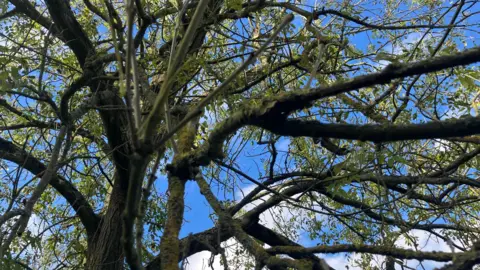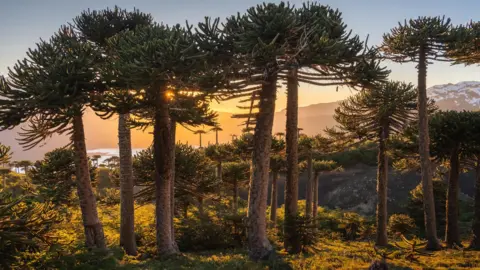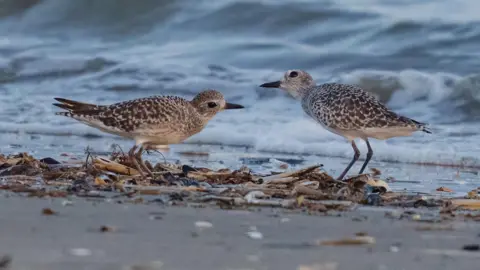Scientists assessing dangers posed to the world’s trees have revealed that more than a third of species are facing extinction in the wild.
The number of threatened trees now outweighs all threatened birds, mammals, reptiles and amphibians put together, according to the latest update to the official extinction red list.
The news was released in Cali, Colombia, where world leaders are meeting at the UN biodiversity summit, COP 16, to assess progress on a landmark rescue plan for nature.
Trees are vital for life, helping to clean the air and soak up carbon emissions, as well as providing homes for thousands of birds, insects and mammals.

More than 1,000 scientists took part in the assessment of the conservation status of trees, compiled by the plant conservation charity, Botanic Gardens Conservation International (BGCI) and the International Union for Conservation of Nature (IUCN).
Emily Beech of BGCI said 38% of the world’s trees are now threatened with extinction.
“Trees are highly threatened all across the world but now we have the tools that we need to make sure that we prioritise conservation action on the ground,” she said.
Trees are at risk in 192 countries, with clearing land for farming and logging the biggest threat and, in temperate regions, pests and diseases.
Well-known trees such as magnolias are among the most threatened, with oaks, maple and ebonies also at risk.
 Getty Images
Getty ImagesScientists at the Royal Botanic Gardens, Kew, in London, are working to conserve trees across the world by collecting seeds and growing specimens in arboretums.
Conservation researcher Steven Bachman said the figures were “shocking”, with a knock-on effect for the many other plants and animals that depend on trees.
“We are currently in a biodiversity crisis,” he said. “Many species of trees all around the world are providing habitat for many other species of birds, mammals, insects, fungi.
“If we lose the trees we are losing many other species with them.”
 Getty Images
Getty ImagesAs well as trees, the update to the extinction red list brought bad news for other plants and animals.
The hedgehog (Erinaceus europaeus) moved a step closer to extinction as populations shrink across much of Europe, including the UK.
The much-loved mammal is losing its natural habitat due to the expansion of farming and land development.
There are also concerns for the survival of migratory birds, many of which make stop-offs on Britain’s vast shorelines and estuaries.
Four UK shorebirds – the grey plover, dunlin, turnstone and curlew sandpiper – are becoming more endangered on the red list.
 RSPB Titchwell
RSPB TitchwellAt COP 16, world leaders are meeting to take stock of progress in meeting a pledge of protecting 30% of lands, seas and oceans by 2030.
The summit is due to end on 1 November, with many issues still outstanding, including finance for preserving biodiversity across the globe and beefing up national plans for protecting nature.

















